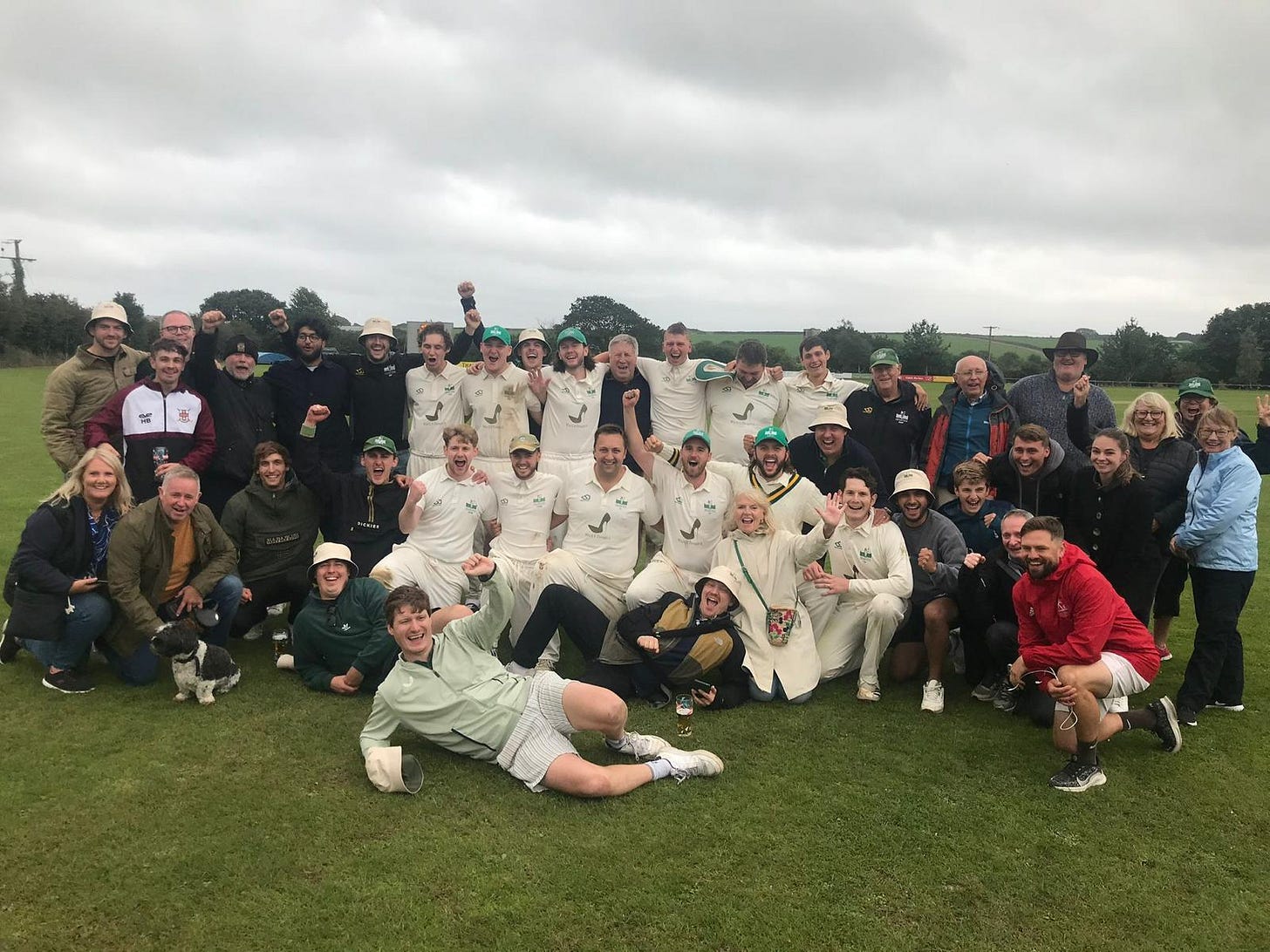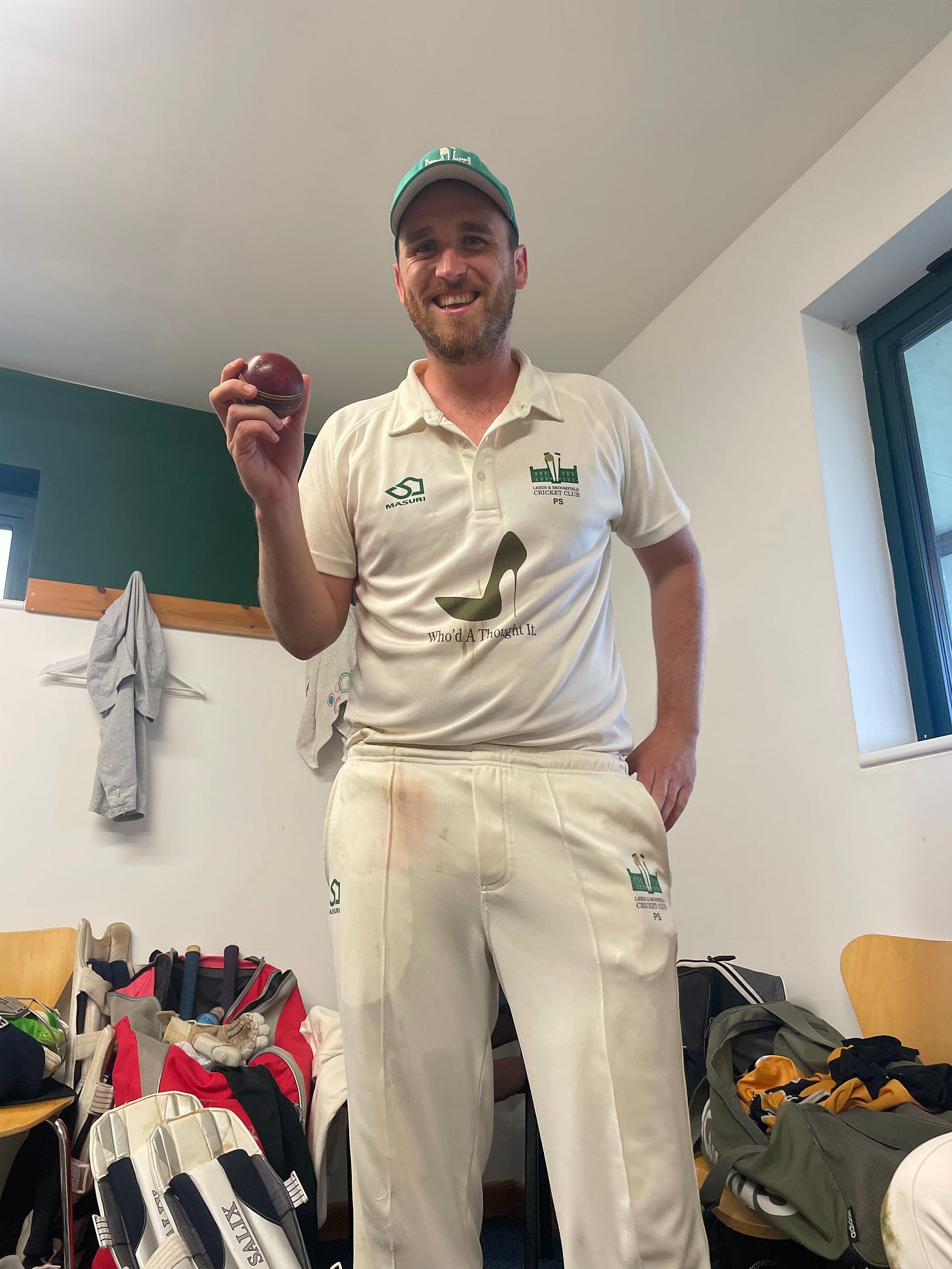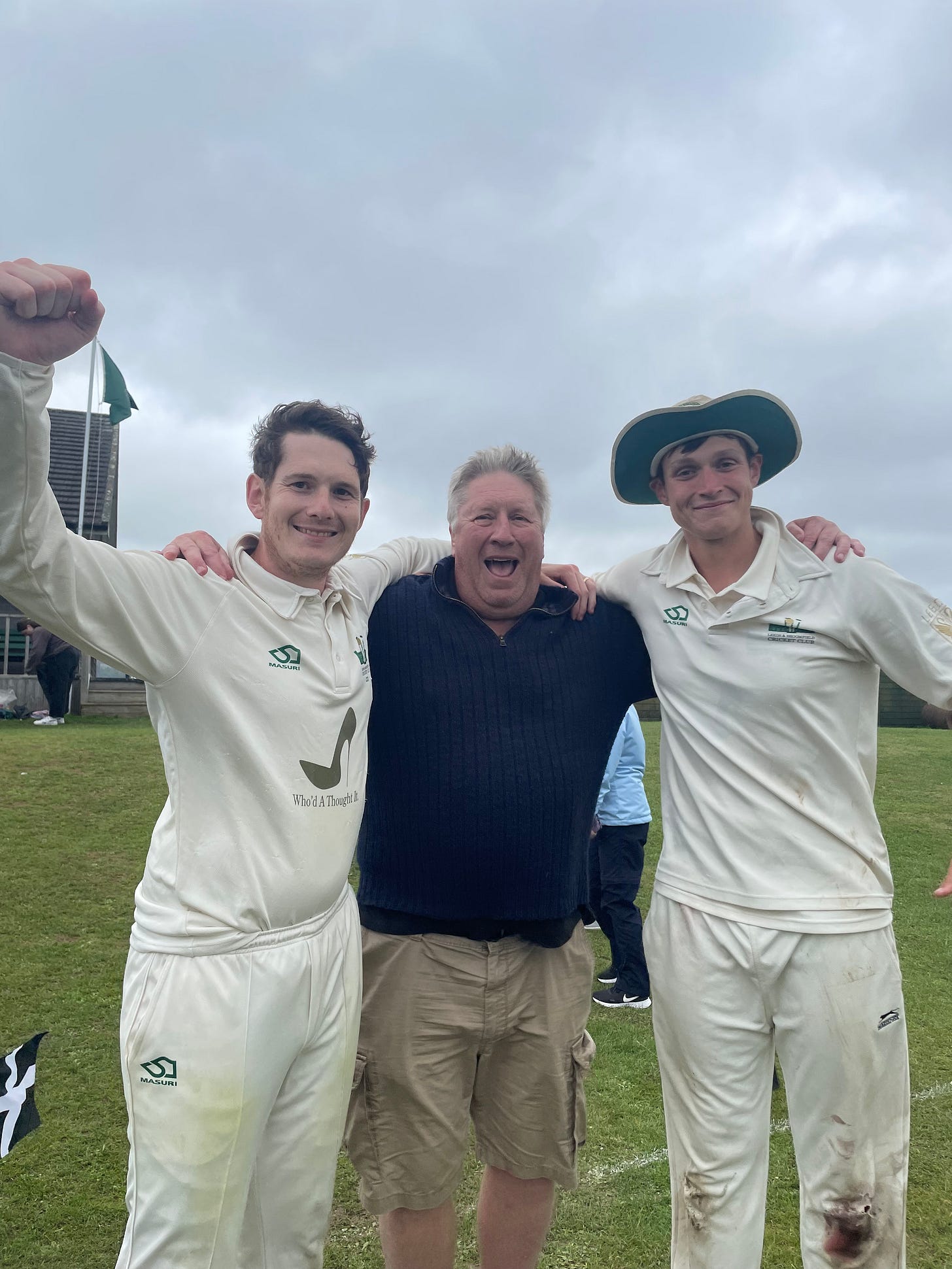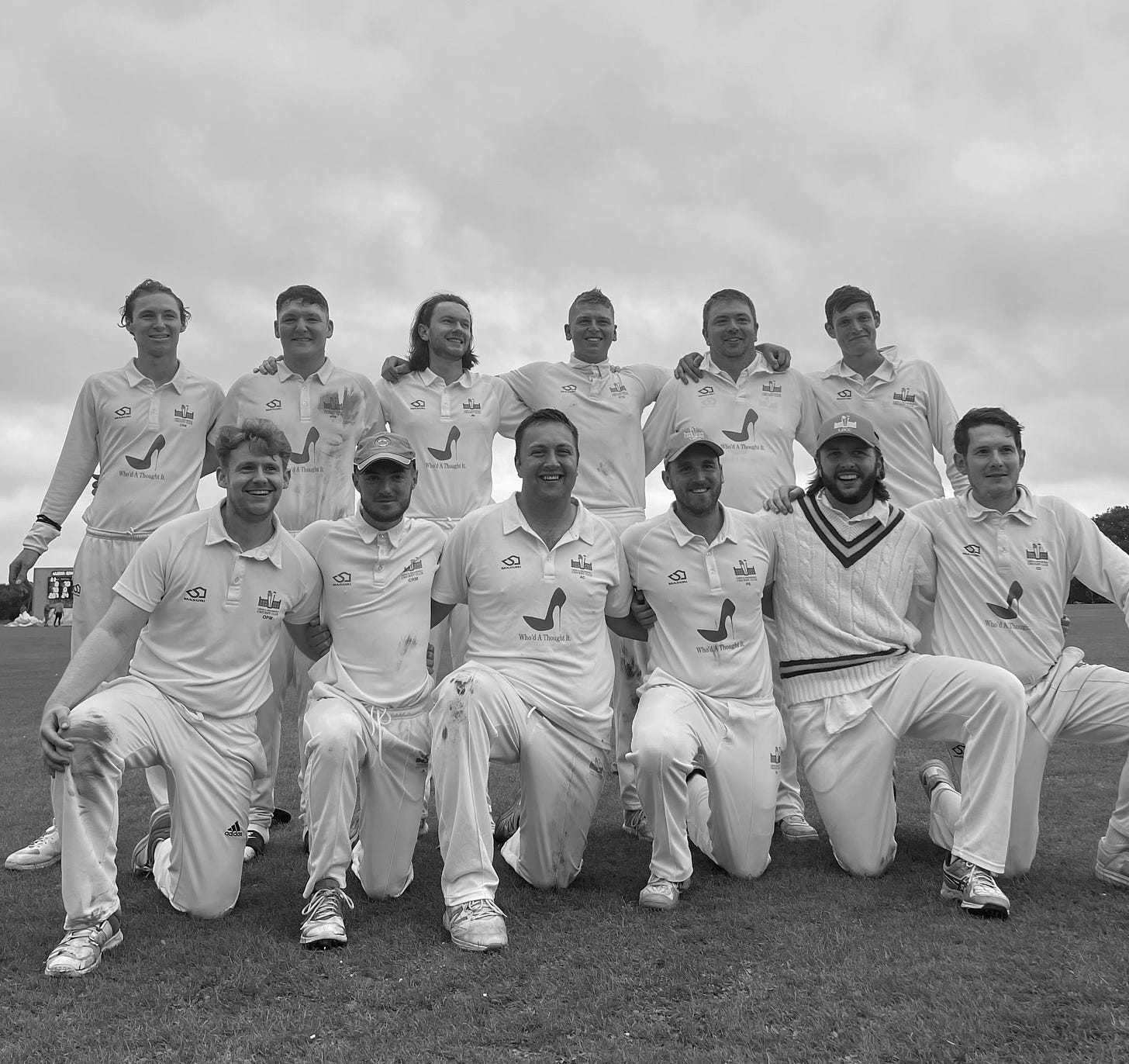Who Stands Behind Them?
LBCC have succeeded in reaching Lord's, but it's worth remembering those not on the pitch who allow dreams like this to materialise.
GRAMPOUND ROAD CRICKET CLUB - 291 miles south-west of Leeds and Broomfield’s own village and gracefully occupying a space in the parish of Ladock, Cornwall.
Sunday was a grey, ominous day. Damp air heavy with the burden of expectation rested on this immaculate setting. Crows circled above as the players strode onto the field, foreboding the end of one team’s journey to Lord’s.
For who would the forces of narrative and destiny play out in their favour and for whom a crushing loss?
In the moments before play started, looks were exchanged between the players, intended to convey steely determination, but failing to hide the cracks of trepidation. The size of the occasion was now bearing down on all who had ventured to absorb and experience it. Desperation from both sets of supporters. Let this not be the end.
But underneath the weight of all this, standing quietly on the edge of the boundary, was one of the men responsible for wrestling Leeds and Broomfield from the edge of despair. Interrupting and reversing a separate narrative many years ago, of a cricket club sliding towards an inevitable collapse, Mr James Ingarfield, former LBCC 1st XI Captain, watched on unfazed.
This man had helped rescue what was a club rapidly approaching disaster in 2006. Despite the immense talent of those at the club (Samson, Hartshorn, Geoff and Darren to name but a few), there was a non-existent junior section (the lifeblood of any thriving cricket club) and an adult pool of players that was thinning faster than Tory electoral candidates, all threatening to render this club a thing of the past.
A commitment to youth was the gamble back then, thrown into the bottom tier of the cricket league alongside the club’s stalwarts. All that time ago they had to look way up to see the light and around themselves at purgatory. Yet here Ingarfield was, 17 years later, looking on at the club that nearly, so nearly became what was, wondering now what might be?
In many ways Ingarfield’s is one of many stories so often untold on occasions like this. Of the unheard voices and contributions that sustain village cricket. On this Sunday in Truro sat the parents of both sets of players having ferried them to and fro, year after year, asking for nothing in return. Dan Creasey, cruelly injured at the beginning of the season, had only just completed half of the 781-mile round trip in his school’s minibus to transport most of the squad, a rear window smashed by Neil Dibben the previous morning. Somewhere miles away sat Danielle Davis, the wife of Chris and mother of his two children, who had allowed him to depart their holiday early, sacrificing cherished time together in order for him to participate in this game.
Grampound Road’s ground staff pushed and pulled the covers on and off as the rain came and went. Oh how the bar staff toiled all day, barely catching a glimpse of the action. Martin McCague, maybe wisely, shut himself away in the scorer’s box, silently willing his boys on as he selflessly performed another of the endless vital tasks that club cricket demands of its participants.
These are some of the people we should remember at times like this, those who stand behind our boys, behind our clubs, behind every adventure and journey like the ones LBCC and Grampound Road were on that day.
Now to the question that occupied Ingarfield’s mind…what was to be?
A performance hardly conceivable, for there was barely a glimpse of Davis’ utter brutality, of Scrivens’ incomputable dominance. Dibben didn’t once turn round in a gust of fury and retaliate with an antagonised charge to the crease, nor did McCague have to huff and puff to continue a stoic spell in the face of adversity.
What we saw instead was measured, controlled and surgical. The spirit levels perfectly even and the engine running without a cough or splutter. Something tantalisingly close to perfection. What did Michelangelo imagine would happen should God’s finger touch Adam’s? Maybe this was it.
Batting first again Leeds saw McCague (41) and Scrivens (58) produce a trademark fast start. Both in their early twenties, some still refer to them as boys, but when the ball left the bat and the sound of leather crashing into willow reverberated around the ground, even some of the toughest cricketers the Cornish side had to offer took an extra step back.
One gargantuan McCague blow saw Dom O’Connell, former Leeds 2nd XI captain, toss his lit cigarette onto the floor, take a catch well back from the rope, embrace wild applause and celebration before tossing back the vol-au-vent. This was to be the festive spirit of the afternoon for Leeds.
An enormous outfield and frequent light rain meant boundaries weren’t the currency of the day however. Singles were the stock to invest in and Leeds duly accumulated at will. “Milk the teets!” was the wise cry from the away fans.
The magisterial George Davis (61) contributed with another fine, reassuring knock after a quick one-two from Grampound Road threatened to put Leeds on shaky legs. Alongside Scrivens they pushed the team to a score that was above par. 207-6 and a score to defend.
One more innings that would define the season then. One last push to force this story onto another page. Dip your pens in ink lads, you aren’t done writing this club’s history yet.
For all the contributions made with the ball in the 24.1 overs Grampound were able to occupy, that of Phil Semmens was the most remarkable. All those years ago when an infinitely hot and dense single point inflated and stretched to become the universe, who would have known that billions of years later a Phil Semmens spell like this could have come to be?
Either side of drinks they fell. Five men unable to prevent the unstoppable force of Phil’s mastery that was striding with, not colliding against the immovable object that was Leeds’ destiny that day. 70 all out and the man responsible for every wicket between 24-2 and 66-8 (including a run out). He finished with 5-11 off 7 overs in a National Cup Semi-Final. Let that sink in.
Tears of joy laid siege behind the eyes of many Leeds supporters. Disbelief was compressed between the hugs of players. Ian Davis, immensely proud father of three boys who all adorn the green cap of Leeds, embraced two of them who were playing that day. Martin McCague’s smile never left his face as he looked on at celebrations he recognised all too well. He and Rick Parson’s, Leeds’ Director of Cricket, have seen wild scenes like this. They looked on with wry smiles. They knew the night would be long and the tale forever told.
Fists banged the tables and walls, voices cracked under the strain of the club song, cheers and cries of victory rang deep into the night. But this was not their crowning moment. This was the most complete performance they have ever produced, proof of what they are truly capable of. But the summit has yet to be climbed.
So once more unto the breach, dear friends. Once more.
Once more onto the field.
A final at Lord’s awaits.






Not 2006 though. After a few years of treading the path to oblivion, the process of recovery for the Club began in late 2002 and there were to be significant markers along the way, one down to pure luck but many more down to planning and timing. And a huge amount of time and effort and support from a lot of people!